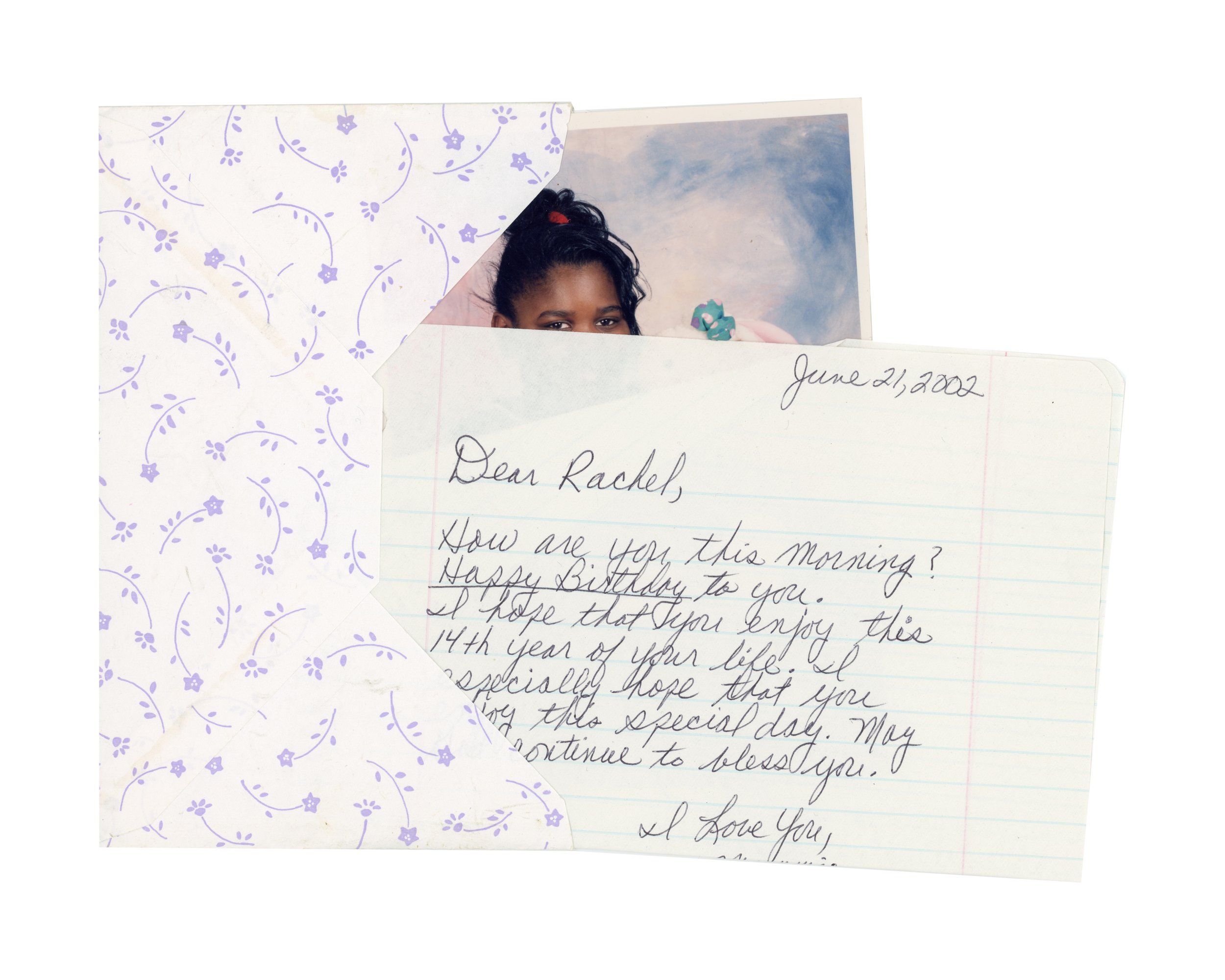S2, EP.11: Rachel Elise Thomas
Rachel Elise Thomas
On episode 11, we sit down with artist Rachel Elise Thomas who works in the realm of lens-adjacent, interdisciplinary approaches. Thomas' interests lies in older photography and images by critiquing the past and challenging people to think about changing their attitudes towards consumerism and colorism. Working with collage, mixed media, print making, and site-specific installation, Thomas' art practice is one that is constantly evolving.
Here we present Thomas’ visual diary of her studio practice.
Crowded House Series — Artist Statement (excerpt)
Crowded House is a visual continuation where I’m documenting and preserving my family history in a home where I’ve lived at for most of my life. This project is giving these forgotten images a new existence, because for so long, me and my family have archived images in various photo albums and photo boxes–unfortunately, they become forgotten. This series serves as a duality of existence–that there is a continuum in these spaces, which also, challenges stereotypes about the Black experience–especially my experience of growing up in the suburbs of Southfield, Michigan-which shares part of its southern border with Detroit-making the cities close in proximity, but visually, worlds apart. As I continue to work on this project, I’ve realized that placement is habitual. Like the piano that sits in the living room, and the wood paneling that has lined the family room for several years, while everything around us changes, there are certain aspects of ourselves that remain unmoved/unchanged.
Give Her, Her Flowers — Artist Statement
Give Her, Her Flowers is a series of collages that revolve around honoring Black women—giving them their flowers while they’re still alive and well to enjoy them, as opposed to waiting until they are sick or deceased to show this kind of gesture. The series includes advertisements of Black women from a Gold Medal Hair Products catalog (circa 1980s), paired with a variety of flowers from different advertisements.
“I have the ability to make difficult subject matter look attractive. That’s how I reel people in.”
Graduate Thesis (excerpt)
This series illustrates my fascination with Black Americans who were among the first to attend predominantly white institutions. Comparing my own journey as a minority in the seen environments, I shed light on the challenges of being a Black student in the pursuit of higher education, emphasizing the isolation often experienced. By including my thumbprints beneath redacted identities accompanied by historical images, I serve as a symbolic representation and support for these pioneering Black students.
Mammy Archetype — 2022, collage (archival paper, watercolor paint, acrylic ink), 9 x 12 inches
Mammy Archetype Series
During my first year at Cranbrook, I was accepted into the Politics in Collage Artist Residency where I focused on the politics of colorism and how its personally affected me. I joined this digital Residency so it would supplement my practice–using whatever I learned and made in this Residency and apply it to my studio practice. One of our discussions inspired me to think of my identity and self-portraiture in ways that best represent who I am while remaining inconspicuous.
Wanting to discuss colorism and deepen the narratives surrounding it, I relied on personal experience. My fascination with Aunt Jemima stems from a particular incident where I was likened to the pancake mascot by a white coworker while wearing one of my fashionable head wraps. This comment, which was made due to my dark skin, ancestral features, and curvier physique, inspired me to reclaim the narrative and assert my empowerment by creating the collage and series called Mammy Archetype. The artwork delves into the themes of colorism and societal standards of beauty–further emphasizing my personal connection to the project, I incorporated my repeated thumbprint multiple times in the background as a symbolic representation of myself.
While conducting my research, I discovered that in vintage advertisements, darker- skinned Black women are often seen promoting food or cleaning products, while lighter/fair-skinned Black women are typically associated with hair, cosmetics, or skin lightening products.
Rachel Elise Thomas working in her home studio



Memory Orchards Series
I wanted to create a visual representation of my familial relationships by incorporating the handwritten message from each family member to add a personal touch and bring depth to each story I was telling. By including family photos and other found imagery in my artwork, I was able to place my personal history in a broader context, showing how my experiences are connected to larger cultural themes. This exploration allowed me to delve into my personal identity, memories, and nostalgia in a way that was both ambiguous and cathartic. This series speaks not only to my own experiences, but also resonates with a wider audience, inviting others to reflect on their own relationships and connections.
The Study of Thumbprints (Mural) — 2023, site-specific installation (drywall, acrylic block printing ink) | Location: Cranbrook Art Academy – Photography Department | 8 x 10
The Study of Thumbprints (Mural) Series (excerpt)
There’s healing in repetition. Striving for imperfection was both cathartic and the antidote. The Study of Thumbprints (mural) is comprised of over 20,200 gradients of my thumbprint. Symbolic in many ways, this act of repetition was an exercise in letting go – freeing myself from outcome and expectation–you are looking at an expansive self- portrait–my many iterations, day to day, year after year.
Using only my right thumb, this took 3 weeks–a consecutive of 8 days to complete (March 7, 2023 – March 21, 2023). Several hours on a ladder, standing up, and lying down so that every inch of my studio wall was covered with my thumbprint. Looking closer, you see the detail, the inconsistencies, the variants. You are looking at an expansive self-portrait–my many iterations, day to day, year after year.
























